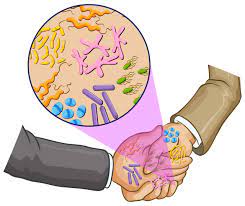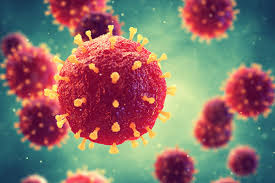How to protect yourself from any infectious disease
Diseases and treatments: a comprehensive overview
introduction
Diseases are an integral part of the human experience, ranging from simple diseases to chronic and complex conditions. Treatment methods have evolved significantly over the ages, which has contributed to improving the quality of life and increasing life expectancy.
Types of diseases:
Diseases are divided into several main types, including:
Infectious diseases: These diseases are transmitted by bacteria, viruses, fungi, and parasites. Common examples include influenza, measles, and malaria.
Chronic diseases: These are diseases that last for long periods and may be permanent, such as: diabetes, high blood pressure, and heart disease.
Genetic diseases: These diseases are transmitted from parents to children through genes, such as: cystic fibrosis and Huntington's disease.
Mental illnesses: include mental and psychological disorders, such as: depression, anxiety disorder, and schizophrenia.
Treatment methods:
Treatment methods vary based on the type and severity of the disease. Here are some of the common methods:
Pharmacological treatments: include medications that are used to treat symptoms or eliminate the causes of the disease. These medications are developed through medical research and include antivirals, antibiotics, and anti-inflammatory medications.
Surgery: It is used to treat conditions that require surgical intervention, such as removing tumors or repairing damaged tissue.
Physical therapy: Focuses on restoring movement and bodily functions after injuries or surgeries, and includes exercises and massage.
Psychotherapy: includes techniques such as talk therapy, cognitive behavioral therapy, and psychiatric medications to help patients deal with mental illnesses.
Alternative and complementary therapy: Incorporates practices such as traditional Chinese medicine, Ayurveda, and acupuncture. It is often used alongside conventional treatments.
Recent developments in treatment:
The medical field has witnessed tremendous developments in recent years, including:
Gene therapy: seeks to correct defective genes responsible for hereditary diseases. Successful trials have begun to treat diseases such as cystic fibrosis and muscular dystrophy.
Stem cell therapy: Stem cells are used to repair damaged tissue or treat chronic diseases such as diabetes and heart disease.
Biotechnology: includes the development of new drugs and technologies such as monoclonal antibodies used in cancer treatment.
Disease prevention: Disease prevention is one of the most important aspects of maintaining public health. Prevention strategies include:
Vaccinations: Help protect against infectious diseases such as measles and polio.
Regular examinations: enable early detection and treatment of diseases in their initial stages, such as breast cancer screening and high blood pressure.
Healthy diet and exercise: play an important role in preventing chronic diseases such as diabetes and heart disease.
Genetic Disease: Genetic diseases are a group of diseases that are transmitted from generation to generation through genes. Genetics plays a big role in determining whether a person is at risk of developing a hereditary disease or not. These diseases are caused by changes or mutations in genes, which may be inherited from parents or occur for the first time in the affected person. In this article, we will discuss the types of genetic diseases, their causes, transmission mechanisms, and some common examples of these diseases.
Types of genetic diseases
Genetic diseases are divided into three main types:
Minor genetic diseases (monogenic): It results from a mutation in a single gene. Heredity can be recessive or dominant.
Example: sickle cell disease and cystic fibrosis.
Multiple genetic diseases (polygenic): It results from the effect of several genes together. They are more complex than monogenic diseases.
Example: type 2 diabetes, heart disease. Genetic diseases linked to chromosomes:
- They result from changes in the structure or number of chromosomes.
- These include chromosomal syndromes such as Down syndrome and Turner syndrome.
Causes of genetic diseases
Genetic diseases occur as a result of mutations in DNA. These mutations can be inherited from one or both parents, or they can occur spontaneously during cell division. The main reasons include:
Genetic mutations:
- Changes in the DNA sequence of a specific gene.
- Chromosomal disorders:
- Changes in the number of chromosomes (such as trisomy in Down syndrome).
- Changes in chromosomal structure (such as deletions or duplications).
- Multifactorial inheritance:
- Interaction between genetic and environmental factors.
- Mechanisms of transmission of genetic diseases
Genetic diseases are transmitted in different ways depending on the type of mutation and the way it is inherited:
Recessive inheritance:
- A person needs two copies of the defective gene for the disease to develop.
- If a person carries only one copy, he or she is an asymptomatic carrier.
Example: cystic fibrosis.
Dominant inheritance:
- One copy of the defective gene is enough for the disease to appear.
- An affected person may transmit the gene to 50% of his children.
Example: Huntington's disease.
Inheritance linked to sex chromosomes:
- Diseases linked to the X chromosome affect males more than females.
- Females carry one intact copy that can protect them from developing symptoms.
Example: hemophilia.
Examples of common genetic diseases
Huntington's disease:
- A dominant hereditary disease that causes damage to brain cells.
- It usually begins in middle age.
- A recessive hereditary disease that causes damage to the lungs and digestive system.
- It leads to the production of thick and sticky mucus.
Sickle cell disease:
- An autosomal recessive disease that causes malformed red blood cells.
- It causes pain attacks and other health problems.
Down's syndrome:
- A chromosomal disorder resulting from trisomy 21.
- It leads to a delay in mental and physical development.
- Infectious diseases: challenges, prevention and treatment
introduction
Infectious diseases are one of the greatest health challenges facing humanity throughout the ages. It is caused by a variety of microorganisms such as viruses, bacteria, fungi, and parasites. These diseases can be transmitted in multiple ways and their symptoms include a wide range of health effects, ranging from minor to life-threatening. Understanding infectious diseases and taking appropriate action for prevention and treatment requires an integrated effort from scientists, medical practitioners, and societies at large.
Types of infectious diseases:
Infectious diseases are divided into several main categories based on the type of cause:
Viral diseases: caused by viruses that attack living cells and reproduce within them. Common viral diseases include influenza, measles, AIDS (HIV/AIDS), and coronaviruses such as COVID-19.
Bacterial diseases: caused by infection with bacteria. Bacteria can be harmful as in cases of tuberculosis, strep throat, and staph infections.
Fungal diseases: caused by fungi that can infect the skin, nails, and lungs. Examples of fungal diseases include ringworm and candidiasis.
Parasitic diseases: caused by parasites such as worms and microbial parasites. Parasitic diseases include malaria, schistosomiasis, and giardiasis.
Methods of transmission of infectious diseases:

The methods of transmission of infectious diseases vary greatly, the most important of which are:
Airborne transmission: Some diseases, such as influenza and tuberculosis, are transmitted through droplets from coughing or sneezing.
Transmission via direct contact: includes physical contact with an infected person or contact with their bodily fluids, as is the case with AIDS and human papillomavirus (HPV).
Transmission through contaminated food and water: Bacteria and viruses transmitted through contaminated food can cause diseases such as cholera and typhoid.
Transmission via insect vectors: Some insects, such as mosquitoes and ticks, act as vectors for transmitting diseases, such as malaria and dengue fever.
Prevention of infectious diseases:
Infectious disease prevention includes a set of strategies aimed at reducing the risk of exposure to infection and the spread of disease:
Vaccinations: Vaccinations are one of the most effective means of preventing infectious diseases. It helps stimulate the immune system to fight viruses and bacteria. Notable examples include vaccinations for measles, polio, and COVID-19.
Personal hygiene: This includes washing hands regularly, using disinfectants, and maintaining general hygiene to reduce the risk of exposure to bacteria and viruses.
Food safety: Make sure to cook food well and store it correctly, and avoid consuming contaminated foods.
Insect control: Using mosquito nets and insecticides to limit the spread of diseases transmitted by insects.
Health awareness: Spreading awareness of the importance of prevention and ways of transmitting diseases can help reduce their spread. This includes education on hygiene practices and vaccinations.
treatment:
Treatment of infectious diseases depends on the type of pathogen and the severity of the infection. Treatments range from medications, supportive care, and additional preventive measures:
Pharmacological treatments: include the use of antibiotics for bacteria, antivirals for viruses, antifungals for fungi, and antiparasitics for parasites. Antibiotics are effective against bacteria, but not viruses, so incorrect use can lead to bacteria becoming resistant to antibiotics.
Supportive care: includes managing symptoms and providing general health care such as fluids, analgesics, and antipyretics. In conditions such as influenza or enteroviruses, supportive care can be sufficient for the patient to recover.
Isolation and quarantine: Isolation is used to avoid transmission of the disease from the infected person to others. During the COVID-19 pandemic, quarantine and isolation measures have been essential to limit the spread of the virus.
Future challenges:
Despite great progress in combating infectious diseases, there are continuing challenges facing the world:
Antibiotic resistance: Overuse and misuse of antibiotics leads to the development of treatment-resistant bacterial strains, making some bacterial diseases more difficult to treat.
New epidemics: New infectious diseases can emerge, as happened with COVID-19, requiring continued preparedness and a rapid response from the global health system.
Climate changes: Climate changes affect the spread of infectious diseases, as the areas where disease-carrying insects such as mosquitoes spread can change.
Conclusion
Knowledge and technology play a crucial role in addressing health challenges. As medical research and developments continue, we can look forward to a healthier and safer future. Prevention and comprehensive health care are key to promoting public health and reducing the spread of diseases.


You must be logged in to post a comment.